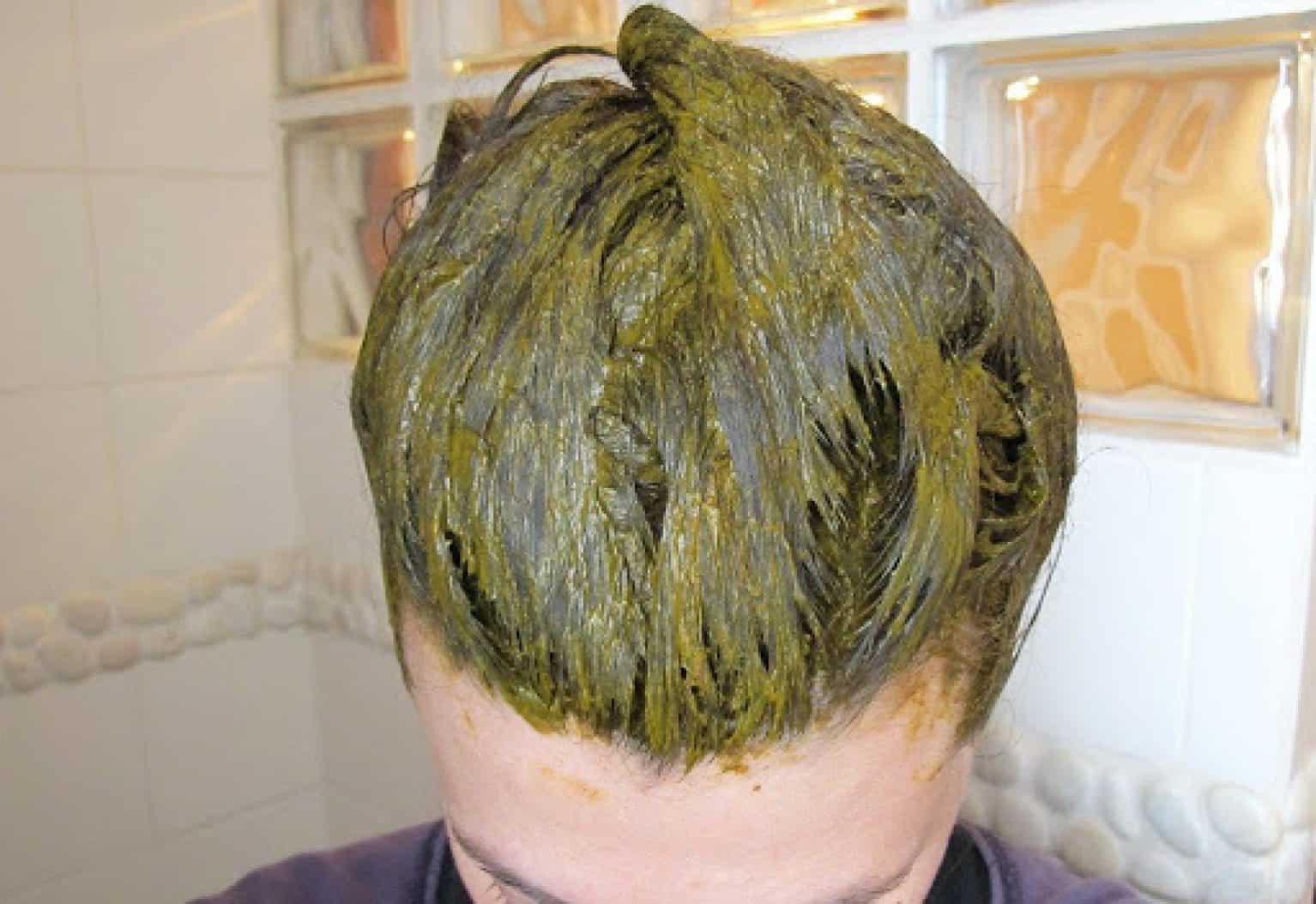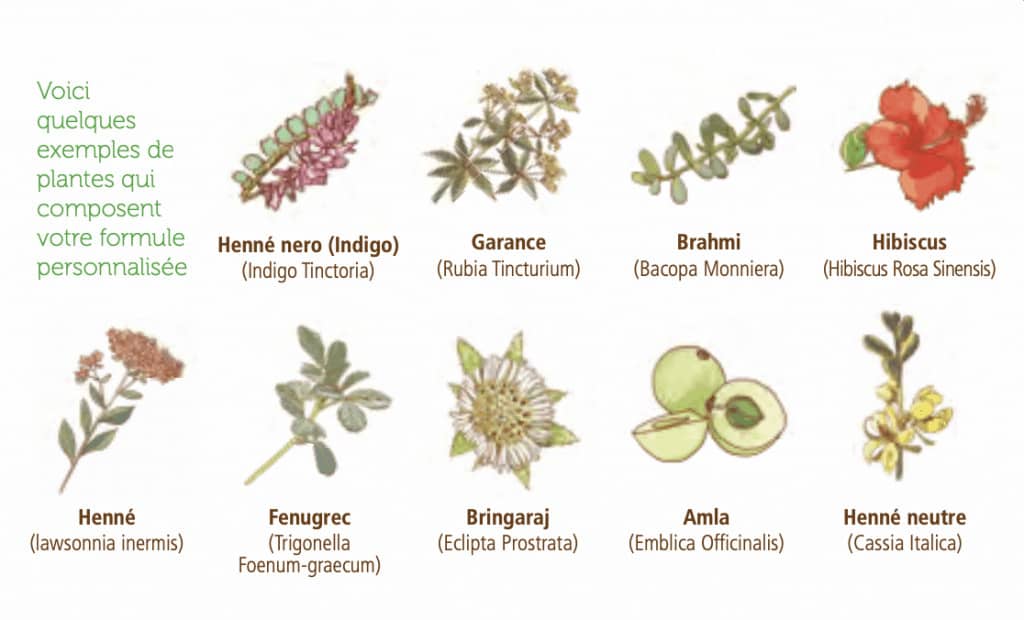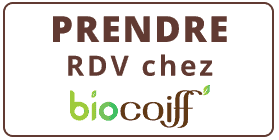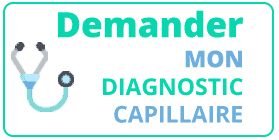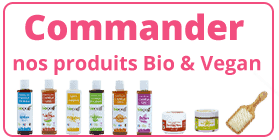Se colorer les cheveux est une pratique ancestrale qui est presque devenue banale. Les molécules chimiques ont grandement remplacé le henné ou l’indigo. Mais aujourd’hui vous pouvez choisir une coloration sans ammoniaque qui préserve votre santé et l’environnement.
Qu’est-ce-que l’ammoniaque ?
L’ammoniaque, c’est le composé basique qui sert à ouvrir les écailles du cheveu pour mieux faire pénétrer les pigments de la coloration.
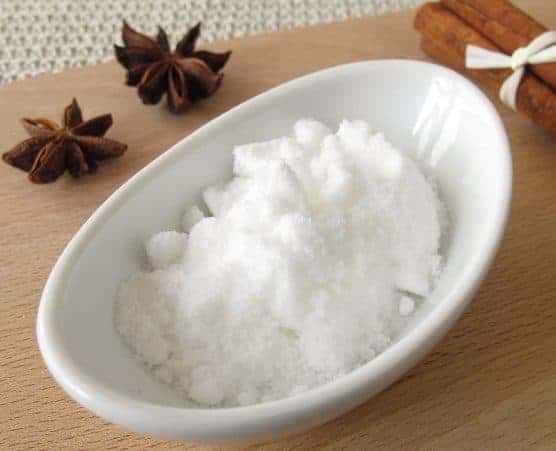
Les colorations “sans ammoniaque” ne sont pour autant pas sans danger pour la santé.
Ces dernières utilisent quand même des produits moins fort que l’ammoniaque mais qui agressent quand même votre cheveu.
Les effets de l’ammoniaque sur les cheveux
L’ammoniaque est principalement utilisée pour procéder à la coloration capillaire, permanente ou défrisage car elle a pour effet de décoller les cuticules du cheveu (écailles microscopiques qui protègent le cheveu naturellement).
Les écailles empêchent donc toutes substance de pénétrer l’intérieur du cheveu.
Il faut réussir à décoller les écailles du cheveux pour que les substance actives puisse entrer à l’intérieur du cheveu.
Un fois les cuticules décollés les autres substances présentes dans le produit ammoniaqués comme les pigments de coloration, agents chimique de défrisage, etc… pénètre à l’intérieur du cheveu.
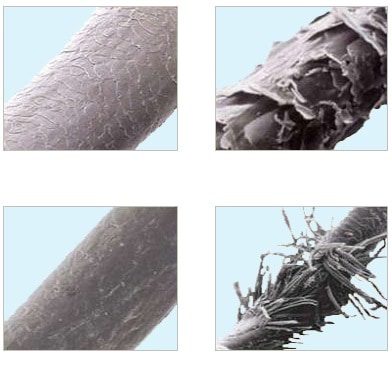
Les substance peuvent donc agir à l’intérieur du cheveu puisque l’ammoniaque a soulevé les cuticules protectrices.
L’ammoniaque présent dans la coloration chimique ouvre l’écaille du cheveux pour laisser entrer la couleur.
L’ammoniaque abîme énormément le cheveu car il défait momentanément la protection naturelle du cheveu.
Les cuticules se referment ensuite, mais moins bien.
A force de faire des colorations ces dernières ne se remettent plus en place correctement.
Le cheveu s’abîme alors il devient poreux et perméable car la protection naturelle ne le recouvre plus.
Il devient terne et rêche et s’emmêle rapidement puisque les cuticules restent ouverte.
Pourquoi l’ammoniaque est nocif ?
Décoller les cuticules du cheveu est un acte très agressif pour le cheveu.
Au fur et à mesure les cuticules ne se remettent plus efficacement en place et cela rend donc le cheveu perméable, poreux ils ne sont donc plus protégés comme il faut.
Etant donnée que les cuticules sont ouvertes, le cheveu ne réfléchit plus correctement la lumière et la chevelure devient donc terne et perd son éclat.
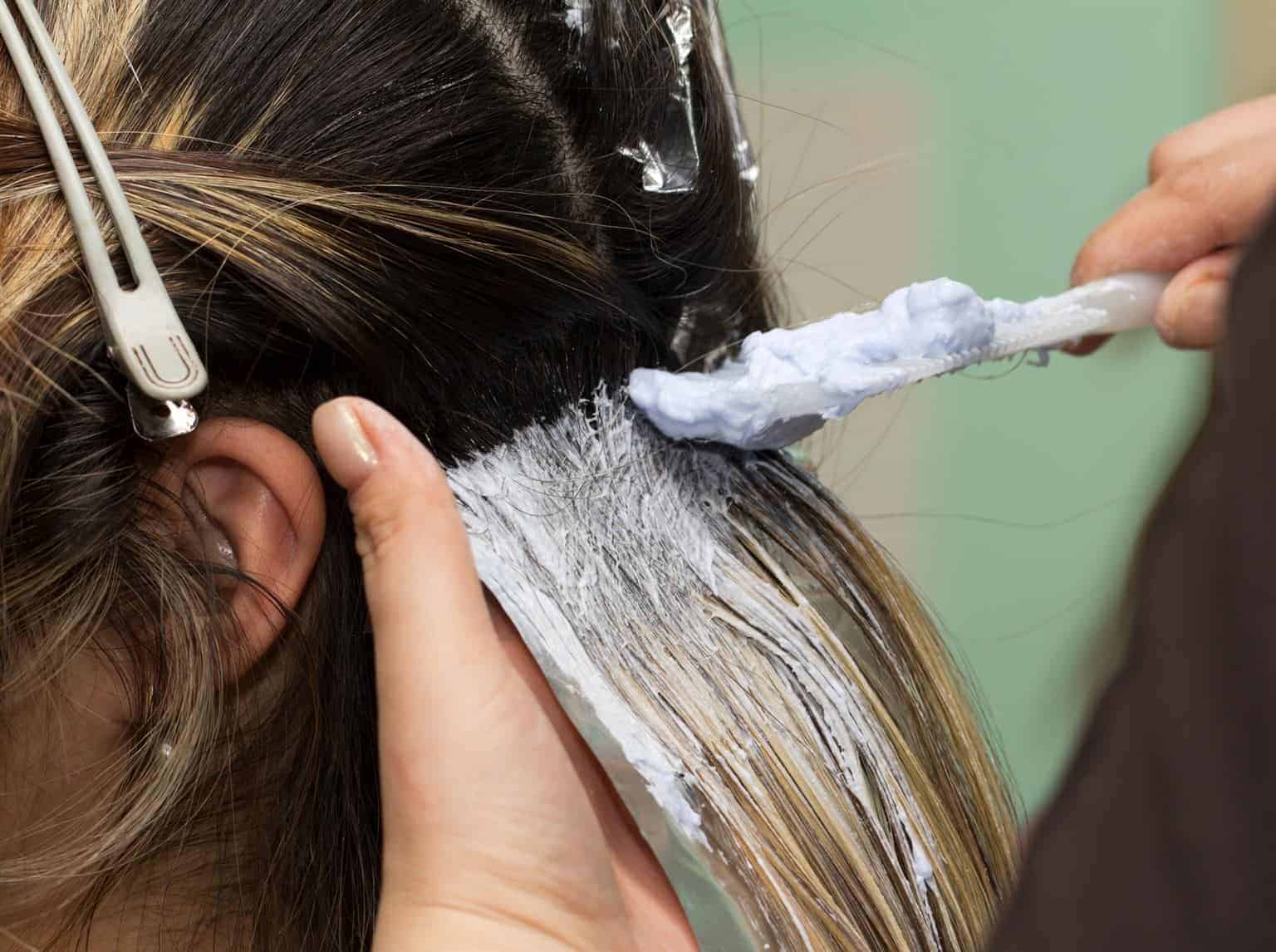
Quand les cuticules sont bien plaquées autour du cheveu, c’est un peu comme si le cheveu était entouré d’un miroir réfléchissant.
L’ammoniaque peut-être dangereux car elle peut causer de possibles allergies, irritations cutanées (du cuir chevelu entre autre) comme l’eczéma.
Les irritations peuvent même être respiratoires car l’ammoniaque peut brûler les tissus délicats des poumons.
Il ne faut donc pas utiliser de produits “ammoniaqués” dans un milieu non aéré.
Sans vous en apercevoir, les gaz ammoniaqués se dégagent du produit et peuvent vous provoquer des micros-lésions et peut-être même des lésions de vos poumons.
Différence entre coloration chimique avec ammoniaque et coloration sans ammoniaque
Les colorations chimiques sont faites à base d’oxydation : elles retirent dans un premier temps les pigments naturel des cheveux et re-créent ensuite une nouvelle couleur par une réaction chimique à l’intérieur du cheveu.
Les colorations végétales, à contrario, enrobent, gainent le cheveux et apportent naturellement volume et brillance aux cheveux.
La couleur ne pénètre pas dans la fibre capillaire contrairement à la coloration chimique.
Les colorations végétales sont avant tout un soin pour le cheveu, elles protègent et revitalisent le cheveux.
La coloration végétale agit comme une aquarelle, tout en finesse et semi-transparence elle pose un voile de couleur sur vos cheveux.
Qu’est-ce-que la coloration végétale sans ammoniaque ?
Les colorations végétales se composent d’ingrédients végétaux et de minéraux, elles ne contiennent aucun composant chimique et ne sont donc pas allergisantes.
Ce sont des pigments naturels de racines et de feuilles qui viennent se fixer et gainer le cheveu.
Elles redonnent vie à vos cheveux, qui deviennent plus forts et plus brillants.
Les pigments naturels de cette coloration naturelle, entourent la fibre capillaire d’une gaine qui va lisser, protéger et apaiser.
Après plusieurs colorations, vous retrouverez vos cheveux d’adolescente, doux et soyeux !
Quels sont les avantages ?
La coloration végétale a plusieurs avantages car elle est 100% naturelle.
De plus, il n’est pas nécessaire d’attendre que votre coloration chimique soit partie car la première séance commence par un masque à l’argile pour purifier la chevelure et éliminer tous les résidus chimiques qui pourraient nuire à la tenue de la coloration végétale.
Le résultat d’une coloration végétale est très naturel.
Il n’y a pas d’effet casque étant donné que les pigments de la couleur fusionne avec la base.
La repousse est donc moins visible.
La coloration végétale agit comme un soin sur le cheveu car elle referme les écailles du cheveux et gaine la chevelure qui semble plus épaisse et brillante et protège le cheveu des agressions en formant une barrière.
Les allergies à cause des colorations chimique on diminué avec la coloration végétale.
De nombreuses femmes enceintes se font des colorations végétales pour prendre soin de leur cheveux et de leur bébé.
Les pigments de la coloration végétale sont divers et variés et elle recouvre très bien les cheveux blanc.
La prise est même plus rapide sur une base très claire et la coloration tient sur toutes les carnations
Quelles sont les limites ?
La coloration végétale a certaines limites : il n’est pas possible d’éclaircir le cheveu.
Pour avoir des mèches ou balayage il est nécessaire de passer par l’oxydation.
Il n’est pas possible pour une brune de devenir blonde avec la coloration végétale ! :)
La pose de la coloration est plus longue qu’une coloration chimique (30min et 2h).
Il faut aussi trouver un coloriste spécialisé dans la coloration végétale car c’est une technique spéciale et tous les salons ne proposent pas ce type de coloration.
Il est important de confier sa tête à un professionnel car le retour en arrière est difficile.

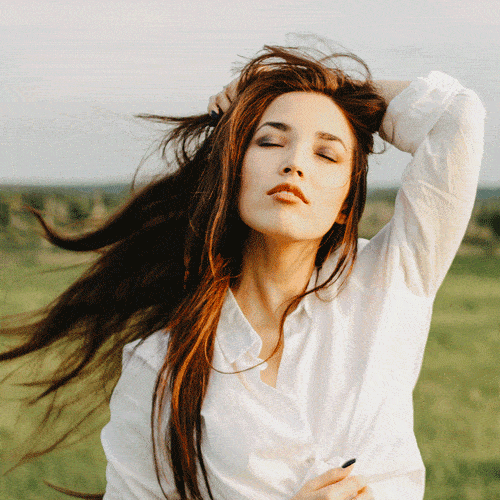 Coloration Végétale
Coloration Végétale
 Balayage minéral
Balayage minéral
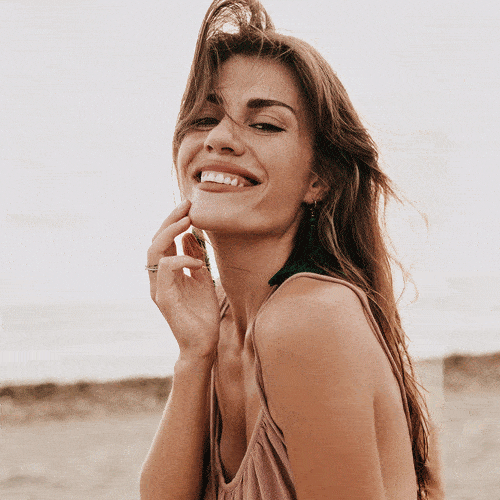 Soins Capillaires
Soins Capillaires
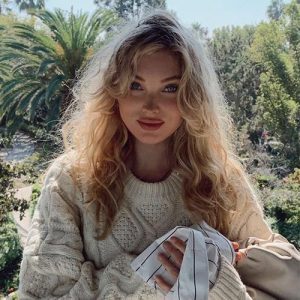 Coupe
Coupe
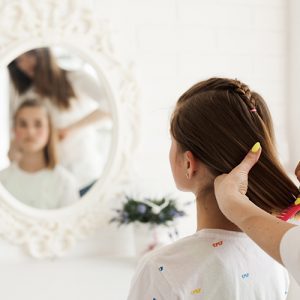 Diagnostic gratuit
Diagnostic gratuit
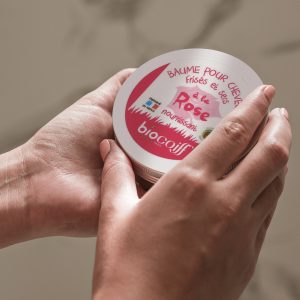 Accueil E-boutique
Accueil E-boutique
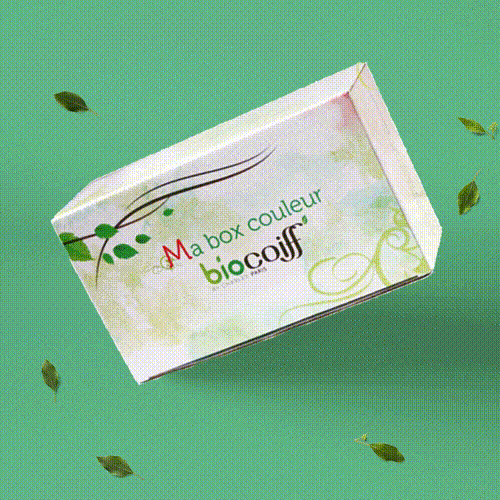 Box Couleur
Box Couleur
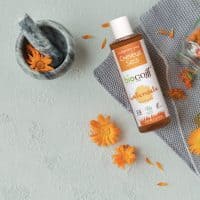 Shampoings
Shampoings
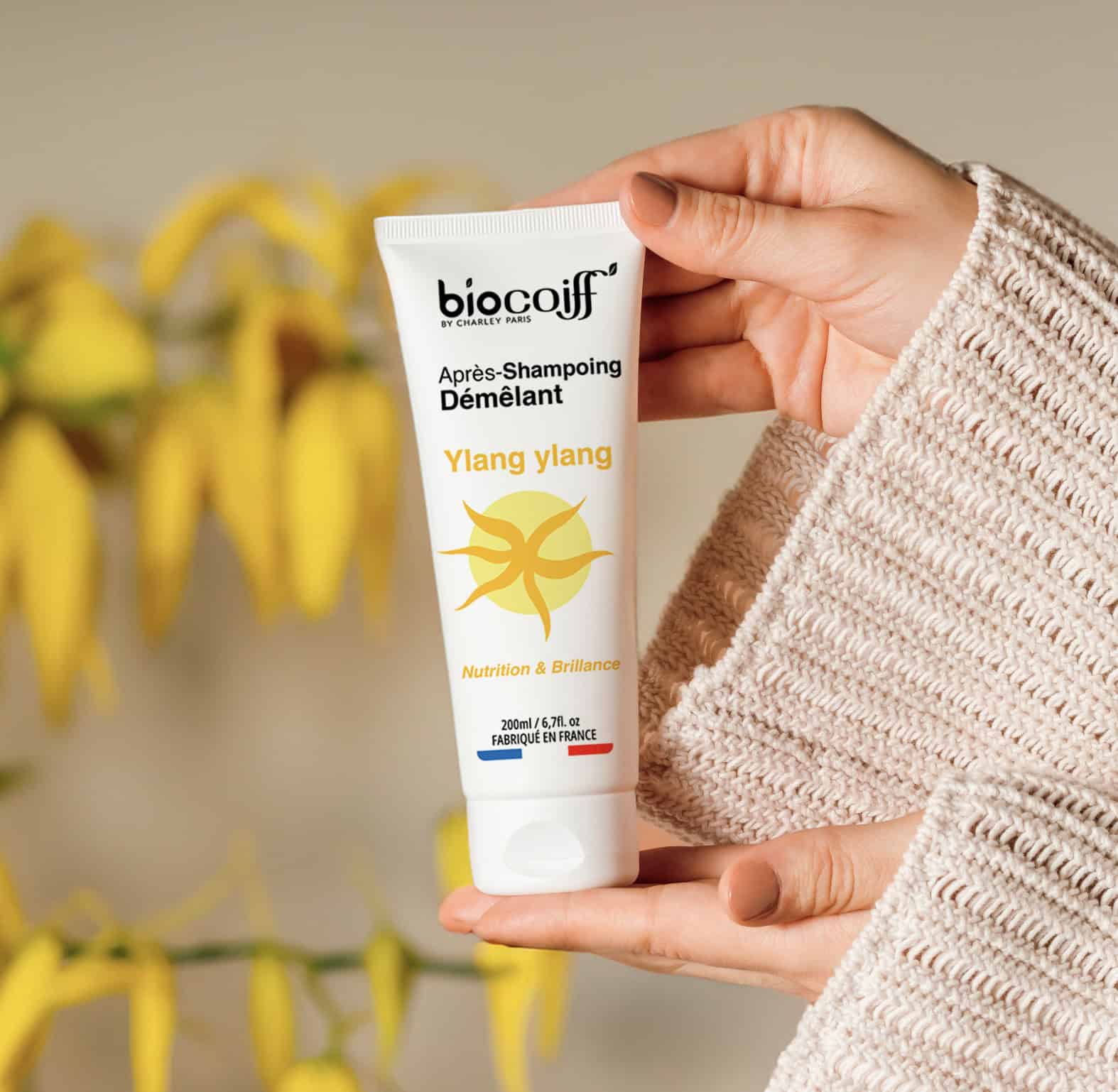 Soins
Soins
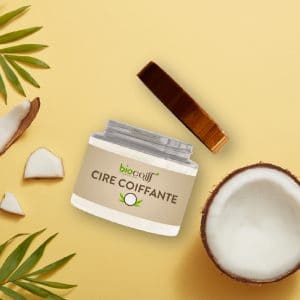 Coiffants
Coiffants
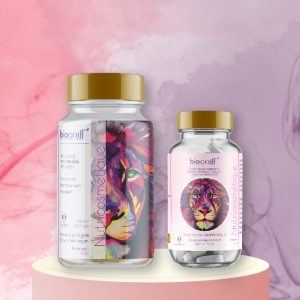 Nutricosmétiques
Nutricosmétiques
 Accessoires
Accessoires
